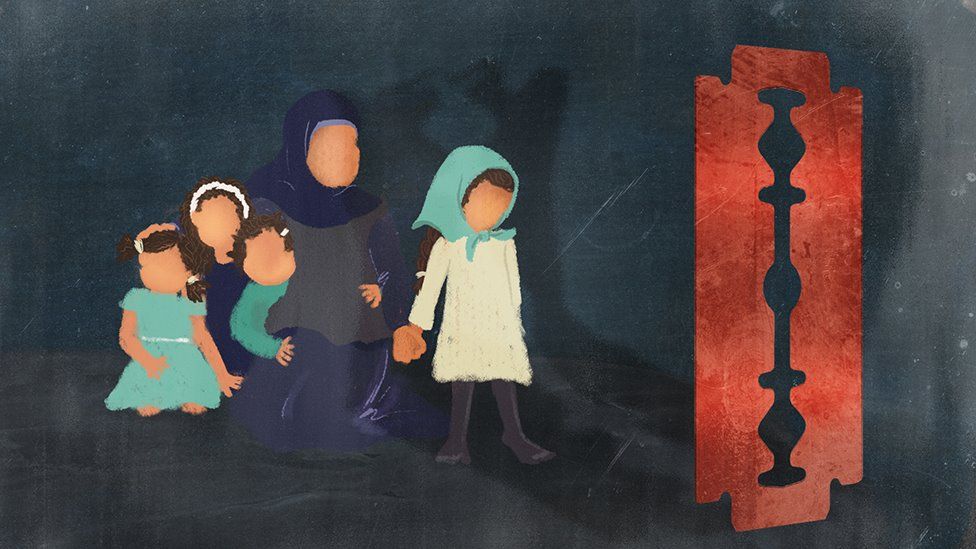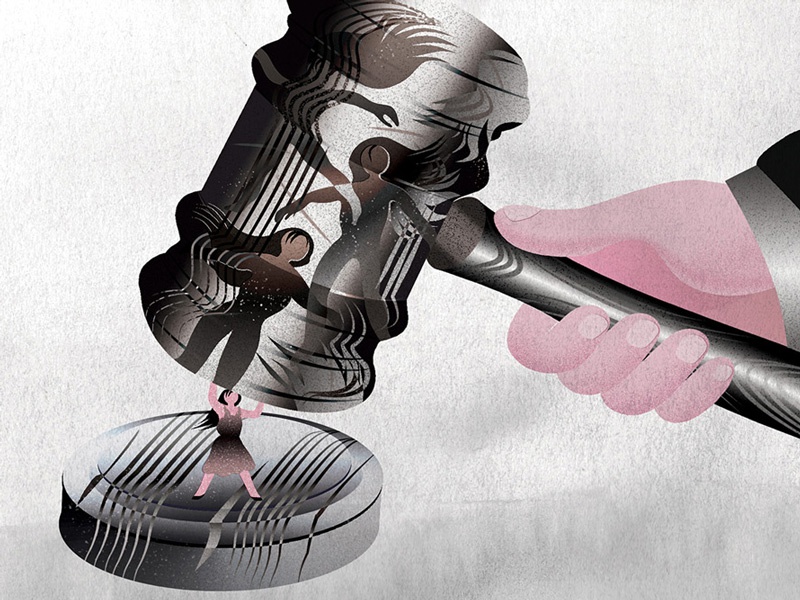
Female Genital Mutilation (FGM) is the blanket term as defined by the United Nations for any type of abuse, injury or mutilation caused willfully to the genitalia of a woman. Such is the practice of Khafdz/Khafz, an archaic practice that encourages the mutilation of women through the circumcision of girls under 15 years of age. While advocates for the practice argue that Khafz cannot be considered FGM as it is a religious practice and for the benefit of the woman, most women who have spoken out about the practice consider it a form of religious fanaticism and FGM.
The Indian government does not officially recognize this practice and hence all studies and statistics collected on the prevalence of this practice in India are from independent organizations that are fighting for the liberation and equal rights of women suffering such circumstances. Khafz in India is primarily practiced by members of the Dawoodi Bohra community and they have been the primary focus group for efforts targetting the abolition of the practice in India. Multiple women that have suffered from the practice of Khafz are now spearheading the movement against the practice and hope to protect thousands of young girls from the mental and physical agony caused due to the practice.
The History of the FGM
Khafdz is considered to be an ancient practice that has been practiced by members of the Dawoodi Bohra community for over 1400 years. It is said to have come to India in the 1500s with the migration of members of the community to the western coast of India. Since then, the practice of Khafdz has been practiced continuously in India without any form of recognition from the authorities. The practice of Khafdz has attracted global attention from reports of atrocities in regions of Africa such as Sudan which led to the United Nation’s body on the Convention on the Elimination of all Forms of Discrimination Against Women (CEDAW) passing directions which required states to have comprehensive laws against various FGM practices including those such as Khafdz.
In response to the directions, many countries have made provisions in their penal code or through the passing of special laws. Interestingly, much of the Muslim world is also divided over the legitimacy of this act as a religious requirement as multiple sects of Islam prohibit the causing of harm to any member of the family while others believe that it is essential to the purity of the woman. Arguments such as “[the] main reason for female and male circumcision, according to Da’im al-Islam (a 10th-century book of jurisprudence), is hygiene or taharat – not just physical but also “spiritual” and ‘religious’” have been made in support of Khafdz while other communities shun this practice as a barbaric and oppressive relic of a bygone age of religious discrimination.
The Legality of FGM

In India, the practice of Khafdz goes largely unrecognized and unaltered since its beginnings. Much of the practice of Khafdz passes down from generation to generation and cutters (people that undertake the procedure) receive their instructions and permits on a generation to generation basis. Additionally, the Indian government does not have any specific legislation to prevent FGM as abuse and violence against women falls under various sections of the Indian Penal Code.
In addition to this, any actions against Khafdz such as the PIL filed by Sunita Tiwari are defended based on the provisions of Articles 25 and 26 of the Indian Constitution, which ipso facto supersede the Indian Penal Code. The Bohras very often argue that ‘We have been practicing khafz for the last 1,400 years and it is a harmless religious practice.’. Further, they also assert that Khafdz is only conducted through professionals that are experienced and can ensure the safety of the girls that undergo this procedure. Despite the measures taken by women and other NGO’s to curb this practice, it has been made evident that only official legislation will deter the practice of Khafdz rather than an activist-led movement to safeguard women.
FGM and Women’s Rights in India
Article 2 of the Declaration on Elimination of Violence against Women defines violence against women as any form of physical, sexual, or psychological violence and acts that are harmful to women such as FGM, dowry, or other traditional practices. Under this definition, it is quite well established that any and all forms of FGM are harmful to women and are in violation of the rights enjoyed by women in most developed and developing societies. Along the same lines, it can also be said that the practice of Khafdz which is performed without the consent of the girl (albeit her inability to give valid consent) and very often harms the patient of such procedure is an act that is violative of the rights of women.
While the debate about the nature of Khafdz may be debated, it is still an action that causes issues such as mental trauma and physical agony to all those that have undergone the procedure and according to one Bohra doctor, there have been cases of infection, swelling, severe bleeding, shock, tetanus. Further, the Constitution of India allows for the ‘positive differentiation’ of particularly vulnerable classes such as women and children, a provision that has not been made available to Bohra children that have been dominated and oppressed using such practices for over 75 years since independence. Some notable activists in this field have called the act of Khafdz “simply a hangover of patriarchy, it is done to repress women sexually. Therefore, it should not exist in any way”.
The Way Forward
Since the practice of Khafdz is not illegal under any specific legislation, any and all liabilities that arise out of this practice are punishable under various provisions of the Indian Penal Code, Protection of Children from Sexual Offences Act, and other accompanying legislations. The act of Khafdz must be made a punishable offense as it is not only a regressive, oppressive, and overtly patriarchal act but also an act that affects the lives of women who are subjected to its cruelty. Additionally, efforts must be made in all spheres surrounding the practice of this act such as:
- Education to highlight why Khafdz is a dangerous and tormenting practice.
- Efficient Prosecution under relevant sections (319-325 of the IPC) to create awareness and deter the performance of Khafdz.
- Glorification and propagation of Khafdz must be declared illegal and should attract significant punishment to deter persons of the same.
- Reporting of Khafdz should be incentivized such that more reports lead to successful prosecutions.
- Health Professionals must be instructed that performing Khafdz is a punishable offense under existing and other guidelines.
United Nations and FGM
The United Nations considers all acts that fall under the definition of FGM exceptionally violative of the rights of women. In its reports through its body on Convention on the Elimination of all Forms of Discrimination Against Women has issued directives to prevent the practice of FGM in countries where there have been documented records of the same. This legislation has proven to be quite effective with countries such as Sudan and Ghana that have relatively poor legislative and executive power passing laws to prevent FGM.
The reports obtained since then have shown a significant decline in cases of FGM in countries where such laws were passed and people were made aware. If such a system of laws and legislation can be passed in India too then the issue of Khafdz would be much easier to tackle and eradicate. In addition to the classification of certain actions as FGM, the UN has also chosen to set a goal under which all countries will be entirely free from all forms of FGM by the year 2030, a goal that India supported. It would be in line with those goals if India too adopted a strategy of recording and protecting against acts of FGM such as Khafdz, there would be more avenues available to the thousands of women that suffer the consequences of Khafdz.
Conclusion
Khafdz as it is today is considered to be many other than certain orthodox Bohras to be an act of FGM, one which affects a woman adversely, both through mental means and physical pain. It is a practice that although has been followed for over 1400 years is not in line with the rights and freedoms conferred to women in modern times. It cannot be considered a form of valid religious practice as it is arbitrary and harmful to only one group of people practicing the religion – women.
Further, since the constitution already grants the power of positive discrimination in favor of women, a power that has been wielded before (most notable in the case of Shah Bano v. Union of India – Triple Talaq Case), it stands to reason that this power is wielded again and protect the thousands of women from this unfair religious practice, one which they did not consent to and one that they have to bear the consequences of for the entirety of their lives. India is in desperate need of legislation covering such aspects of home and family women-specific laws and the lawmakers of this country owe a duty to the people to protect the rights of even the most minor of groups in the country.